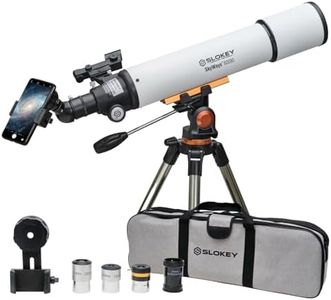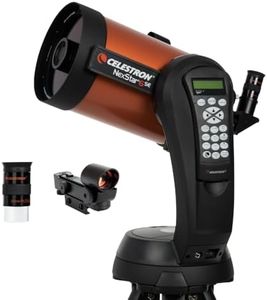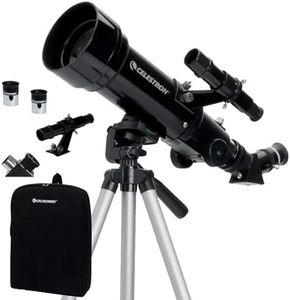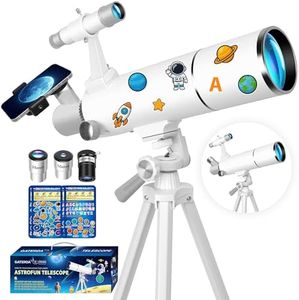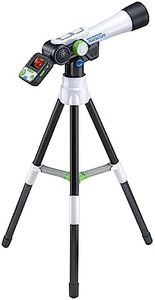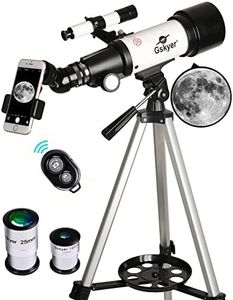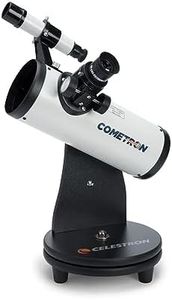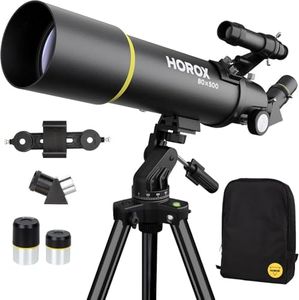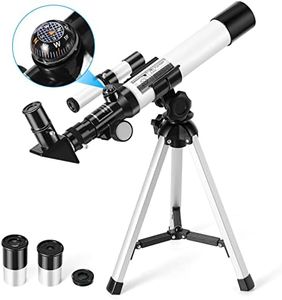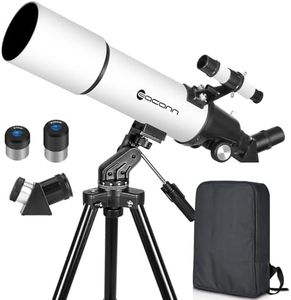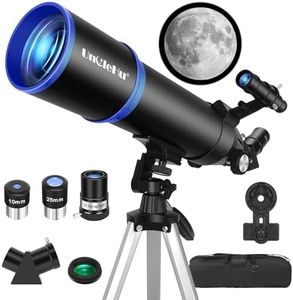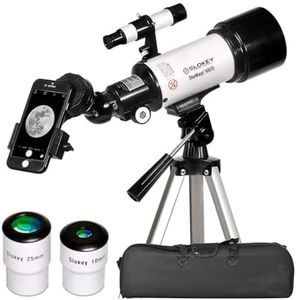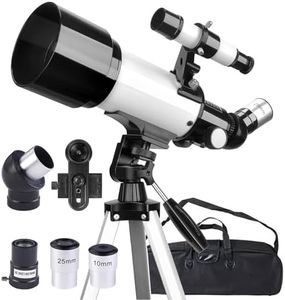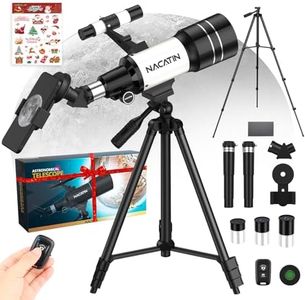We Use CookiesWe use cookies to enhance the security, performance,
functionality and for analytical and promotional activities. By continuing to browse this site you
are agreeing to our privacy policy
10 Best Telescopes For Kids
From leading brands and best sellers available on the web.Buying Guide for the Best Telescopes For Kids
Choosing a telescope for kids can be a fun and educational experience. The right telescope can spark a child's interest in astronomy and science. When selecting a telescope, it's important to consider factors such as ease of use, durability, and the type of celestial objects your child is interested in observing. Here are some key specifications to consider when picking the best telescope for your child.ApertureThe aperture is the diameter of the telescope's main lens or mirror. It determines how much light the telescope can gather, which affects the brightness and clarity of the images. For kids, a smaller aperture (around 60-80mm) is usually sufficient and easier to handle. Larger apertures can provide better views but may be more cumbersome and expensive. Consider your child's age and strength when choosing the aperture size.
MagnificationMagnification refers to how much larger the telescope can make objects appear. While high magnification might seem appealing, it's not always better. Too much magnification can make images blurry and difficult to focus. For kids, a telescope with a magnification range of 20x to 50x is typically adequate. It's more important to have a clear, stable image than to zoom in too much.
Mount TypeThe mount is what holds the telescope steady and allows it to move. There are two main types: altazimuth and equatorial. Altazimuth mounts move up-down and left-right, making them simpler and more intuitive for kids to use. Equatorial mounts are more complex and better suited for tracking objects across the sky, but they can be challenging for beginners. For kids, an altazimuth mount is usually the best choice.
PortabilityPortability is important if you plan to take the telescope to different locations. Lightweight and compact telescopes are easier for kids to carry and set up. Consider telescopes made of durable materials that can withstand some rough handling. A portable telescope encourages more frequent use and exploration.
Ease of UseA telescope that is easy to set up and use will be more enjoyable for kids. Look for telescopes with simple assembly instructions and minimal adjustments. Some telescopes come with user-friendly features like red dot finders or smartphone adapters, which can make locating objects easier. The simpler the telescope is to use, the more likely your child will enjoy using it.
DurabilityKids can be rough on their belongings, so a durable telescope is a must. Look for telescopes made from sturdy materials that can withstand drops and bumps. Protective features like lens caps and padded cases can also help extend the life of the telescope. A durable telescope will last longer and provide more value over time.
AccessoriesSome telescopes come with additional accessories like extra eyepieces, star charts, or educational materials. These can enhance the learning experience and make stargazing more fun. Consider what accessories are included and whether they add value for your child's interests. Extra eyepieces can provide different magnification options, while educational materials can help guide their exploration of the night sky.
